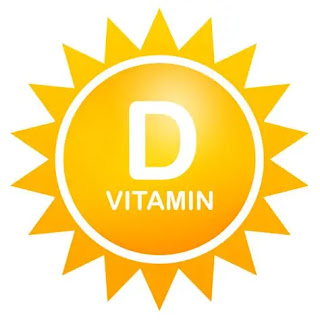The Ultimate Guide to Vitamin D: Benefits, Deficiency Signs, and How to Get Enough Naturally
🌞 Everything You Need to Know About Vitamin D: Benefits,
Sources, Deficiency & More
Vitamin D is one of those nutrients we often hear about—but
don’t always fully understand. Known as the “sunshine vitamin,” it's vital for
much more than just bone health. From boosting immunity to supporting brain
function, vitamin D plays a crucial role in keeping your body strong, balanced,
and healthy.
In this blog, we'll break down everything you need to know
about vitamin D—its importance, how to get it, signs of deficiency, and the
risks of taking too much.
🧾 What Is Vitamin D, and Why Do You Need It?
Vitamin D is a fat-soluble vitamin that helps your
body absorb calcium and phosphate, two minerals essential for strong
bones and teeth. But its benefits don’t stop there. Vitamin D also plays a role
in:
- Immune
function
- Muscle
performance
- Brain
cell communication
Without enough vitamin D, your bones can become thin,
brittle, or even misshapen. Long-term deficiency can lead to serious health
conditions, both in children and adults.
☀️ How Does the Body Get Vitamin D?
There are three main ways to get vitamin D:
1. Sunlight Exposure
Your skin produces vitamin D when exposed to ultraviolet B
(UVB) rays from the sun. Just 10–30 minutes of midday sun exposure
on your face, arms, and legs a few times a week is often enough—though this can
vary based on:
- Skin
tone (darker
skin needs more exposure)
- Geographic
location
- Season
- Age (older adults synthesize less)
- Sunscreen
use
🛑 Important: While sunlight is a natural source, overexposure
increases the risk of skin cancer. Always aim for safe, moderate sun exposure.
2. Food Sources
Some foods naturally contain vitamin D, while others are
fortified to help fill dietary gaps. Good sources include:
- Fatty
fish (salmon, tuna, mackerel)
- Egg
yolks
- Mushrooms
(especially those exposed to UV light)
- Fortified
foods (milk, yogurt, cereal, orange juice)
3. Supplements
Vitamin D supplements are available in two forms:
|
Type |
Source |
Effectiveness |
|
D2 (ergocalciferol) |
Plant-based |
Less effective |
|
D3 (cholecalciferol) |
Animal-based / sunlight |
More effective and longer lasting |
💡 Tip: If you’re supplementing, go for D3—it's generally
more effective at raising blood levels.
📊 How Much Vitamin D Do You Need Per Day?
Here are the Recommended Dietary Allowances (RDAs)
according to the National Institutes of Health:
|
Age Group |
Daily Amount |
|
Infants (0–12 months) |
10 mcg (400 IU) |
|
Children & Adults (1–70 years) |
15 mcg (600 IU) |
|
Adults over 70 |
20 mcg (800 IU) |
|
Pregnant/Breastfeeding Women |
15 mcg (600 IU) |
🧪 What’s a Normal Vitamin D Level?
Vitamin D status is measured using a 25-hydroxyvitamin D
blood test. Here’s how levels are typically classified:
|
Level |
Status |
|
< 20 ng/mL |
Deficient |
|
20–29 ng/mL |
Insufficient |
|
30–60 ng/mL |
Optimal |
|
> 60 ng/mL |
Possibly toxic (especially if supplemented) |
If you’re concerned about your vitamin D levels, ask your
doctor about getting tested—especially if you're at risk.
❌ What Happens If You’re Vitamin D Deficient?
Deficiency can cause a wide range of symptoms, some of which
may be subtle. Common effects include:
- Fatigue
or tiredness
- Bone
pain
- Muscle
weakness or cramps
- Mood
changes, including depression
Health Conditions Linked to Low Vitamin D:
- Rickets (children): soft, deformed
bones
- Osteomalacia (adults): bone pain and
weakness
- Osteoporosis
- Autoimmune
conditions
(e.g., MS, lupus)
- Cardiovascular
disease
- Frequent
infections
- Depression
& seasonal affective disorder
- Increased
risk of certain cancers (research ongoing)
🔍 While low vitamin D is associated with many of these conditions,
it’s not always the direct cause. Still, it's important to keep your levels in
check.
⚠️ Can You Get Too Much Vitamin D?
Yes—and it’s usually from supplements, not sunlight or food.
Vitamin D toxicity leads to hypercalcemia (excess calcium in the blood),
which can cause:
- Nausea
and vomiting
- Confusion
- Frequent
urination and thirst
- Kidney
damage
Safe Upper Limit (Adults):
100 mcg (4,000 IU) per day
Stick to this limit unless advised otherwise by a healthcare
professional.
🧬 D2 vs. D3: What’s the Better Choice?
Both forms are used in supplements, but they work differently
in the body.
|
Form |
Found In |
Effectiveness |
|
D2 (ergocalciferol) |
Plants, fungi, fortified foods |
Less effective |
|
D3 (cholecalciferol) |
Animal products, sunlight |
More effective & longer-lasting |
✅ Choose
D3 if you're supplementing—especially if you're deficient or at high risk.
💡 Final Thoughts
Vitamin D might be called a vitamin, but it acts more like a hormone,
influencing multiple systems in your body. From bone strength to immune
defense, it's essential for overall well-being.
✔️ Key Takeaways:
- Aim
for moderate sun exposure
- Include
vitamin D-rich foods in your diet
- Supplement
if you're deficient or at high risk
- Avoid
excessive doses—more isn’t always better
- Consider
testing if you have symptoms or risk factors
A little sunshine can go a long way—but when in doubt, always
consult a healthcare provider.
☀️ “Just like sunlight brings us strength, God’s light brings healing and hope.”
“The light shines in the darkness, and the darkness has not overcome it.” — John 1:5
Thanks for reading!
💬 "If you found this helpful, someone you care about might need it too. Go ahead—share this and spread a little sunshine today!"













#Jesus#LightoftheWorld#Shineuponus
ReplyDeleteThank you
ReplyDeleteSuch an informative post..God bless you
ReplyDelete